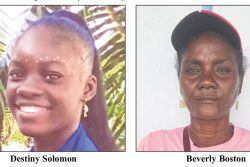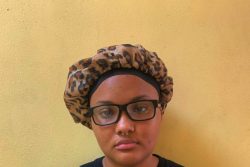Last week, we discussed problems associated with the third eyelid (the nictitating membrane). There are two other conditions that also have to do with that membrane, and which I feel need some explanation.
The third eyelid anchors itself on a bit of cartilage (“soft bone”). Sometimes, the piece of cartilage everts (rolls on itself), taking the nictitating membrane along with it. The third eyelid appears to roll back on itself like a shrivelled leaf. This condition has to be treated surgically. Beware of those who tell you to use antibiotics and eye drops as a cure. I must also mention that this is a congenital condition in some of the big breeds (eg Great Dane, Saint Bernard, Golden Retriever etc)
Finally, there is a malady dubbed “Cherry Eye”. This is a situation whereby the tear gland on the inner surface of the nictitating membrane swells up. As the gland enlarges, it is pushed out from beneath the lid. One can then see this red tumour (that’s why it is called “Cherry Eye”) at the nasal corner of theeye. This tumour should be removed surgically. Again, my advice is not to fool around with antibiotics and eye drops. It seems that certain breeds, like the Cocker Spaniel and Bulldog, are more likely to exhibit this condition.
 Since I mentioned the dreaded word tumour in the last paragraph, allow me to make a quick statement about tumours on the eyelid. First of all, the word tumour really only means swelling or enlargement. Tumour does not automatically mean malignant cancer (although there are some malignant cancers of the eyelid). In fact, the most common tumour on the eyelid is a benign adenoma. An adenoma is a non-inflammatory new growth (neoplasm).
Since I mentioned the dreaded word tumour in the last paragraph, allow me to make a quick statement about tumours on the eyelid. First of all, the word tumour really only means swelling or enlargement. Tumour does not automatically mean malignant cancer (although there are some malignant cancers of the eyelid). In fact, the most common tumour on the eyelid is a benign adenoma. An adenoma is a non-inflammatory new growth (neoplasm).
The tumour (adenoma) on a dog’s eyelid is usually associated with the elderly canine. It has a cauliflower-like appearance. If left alone, it will just grow bigger and ultimately touch and irritate the eyeball. It might even prevent the eyelids from closing over the eyeball. That is a serious matter because the eyeball will not be well lubricated; and the surface may dry off. Then infection follows. Surgical removal of the tumour is the only real option.
Having discussed ailments associated with the third eyelid, let us look at maladies relating to the true (top and bottom) eyelids.
Entropion
This is an uncommon word of Greek origin which means “I turn”. It describes the problem exactly. In effect, the edge of the eyelid turns inward towards the eyeball. The eyelashes and the eyelid edge rub against the surface of the eyeball and cause an inflammatory reaction. Both eyelids can turn inward, but in my experience I have been confronted mostly by a “turning inwards” of the lower eyelid. Of course, as you can well imagine, if the eyelid/eyelashes are constantly rubbing against the surface of the eyeball, then great irritation and therefore much pain will be elicited. Further down the line, if nothing is done to relieve the situation, corneal scarring, corneal pigmentation and even ulceration can develop.
Causes
(i) Genetic
Many authors have documented that certain breeds have a predisposition to this malady. Breeds such as the Chinese Chow, the Irish Setter, Golden Retriever, Great Dane and Bulldog are often mentioned in this regard. But I have seen German Shepherds and Dobermans with this condition. In fact, even as I write, there is a Rottweiler under treatment for a low grade Entropion. The literature speaks of 27 breeds of dogs that could be genetically predisposed to the problem.
(ii) Infection
Inflammation of the eyelid itself (Blepharitis). If there is a bacterial attack on the eyelid. The resultant swelling and pus production can cause the eyelid to roll inwards on to the surface of the eyeball.
(iii) Pain
If, for whatever reason, there is pain in the ocular/peri-ocular area, then the eyelids may react to the pain by turning inwards (Blephaospasm).
Treatment
Well, obviously, the treatment options are closely related to the cause(s) of the problem.
If the inciting cause is eyelid pain (spasm), then the condition may be reversed by alleviating the cause of the pain. Your vet could inject procaine penicillin into the lid which is turned inward or he/she could administer specific nerve blocks. Of course, the earlier this therapy is introduced the better the chances are for immediate and total recovery. Don’t fool around on your own with antibiotic eye drops. They don’t usually work.
Since this Entropion condition is usually anatomical (genetic predisposition?) in origin, the surgical eversion of the eyelid edge/eyelashes away from the eyeball would be the intervention of choice. This correction (plastic surgery) has to be done by skilled hands, because if the suturing or skin removal is done incorrectly the eyelids can be pulled too far outwards creating a permanent eversion (rolling outwards) of the eyelid. This condition (Ectropion) has its own problems.
We’ll deal with this ailment next week.
Until then, have a pleasant week.
Please implement disease preventative measures (vaccinations, routine dewormings, monthly anti-Heartworm medication, etc) and adopt-a-pet from the GSPCA’s Animal Clinic and Shelter at Robb Street and Orange Walk, if you have the wherewithal to care well for the animals. Do not stray your unwanted pets, take them to the GSPCA’s Clinic and Shelter instead. If you see anyone being cruel to an animal, or if you need any technical information, please get in touch with the Clinic and Shelter by calling 226-4237.








